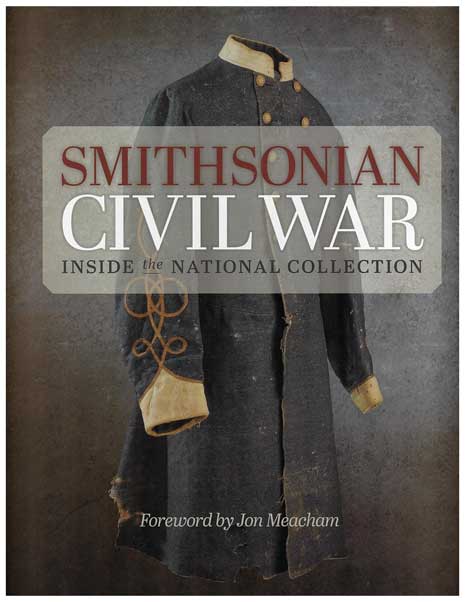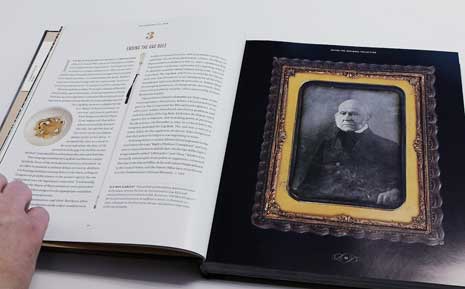New Book: Smithsonian Civil War: Inside the National Collection
Many historians would argue that the American Civil War was the most important event in our nation’s history and that it was a moment that would take its shape from as early as the signing of the Declaration of Independence.
Whether or not those observations are valid, what holds true is that the war was transformative and horrible; while the obvious goals of keeping the Union together and eliminating slavery were met, more than 600,000 men were killed, and lands throughout the South were ravaged by the fighting. “It is impossible,” Jon Meacham notes in the foreword to Smithsonian Civil War: Inside the National Collection, “to assign too much importance to the Civil War. History is not a fairy tale; nothing is inevitable.”
The war started with cannon fire at Fort Sumter in 1861 and culminated in the death of President Abraham Lincoln in 1865. And just as the nation was shackled to the tragedy, so the national collection of the Smithsonian was and is yet tied to the war. Pamela M. Henson, director of the Institutional History Division of the Smithsonian Archives, states in the first chapter of Smithsonian Civil War:
As storm clouds of war gathered over Washington, D.C., in 1861, the Smithsonian—which consisted then of a single building, the Castle, housing Smithsonian Secretary Joseph henry and his family along with a museum, library, and other facilities—experienced the tumult of a divided nation. A noted physicist, Henry faced questions about his loyalty to the union. He had close friends who favored secession, including Smithsonian regents who were expelled from the board for Confederate sympathies.
Even Jefferson Davis, the man who served as president of the Confederate States of America, had ties to the Smithsonian—from 1847 to 1851, Davis was a regent of the institution.
Released in October 2013, Smithsonian Civil War: Inside the National Collection has 150 chapters written by forty-nine Smithsonian historians, curators, and other scholars. Each chapter places emphasis on a different aspect of the national collection, with sections devoted to weapons, uniforms, photographs, letters from and to the theaters of war, and objects related to slavery.
One of the more unusual objects discussed is Union General Philip Sheridan’s war horse, Winchester. Kathy Golden of the National Museum of American History writes that the horse was originally named Rienzi, but that it was renamed Winchester after the October 1864 battle in Winchester, Virginia, between Sheridan’s troops and Confederates commanded by Jubal Early. Winchester died in 1878 and was preserved, becoming part of the Smithsonian collection in 1922.
The National Portrait Gallery is represented in the book with thirty articles by eight members of the NPG staff. Former NPG curator Frank H. Goodyear III and NPG historian James G. Barber served on the editorial committee for the work. Smithsonian Civil War features many objects from the NPG collection. including such national treasures as the famous “cracked-plate” negative of Abraham Lincoln by Alexander Gardner and the large, pantheon-like tribute Grant and His Generals by Norwegian American painter Ole Peter Hansen Balling.
Smithsonian Civil War: Inside the National Collection is available online and at the museum bookstore; it is published by Smithsonian Books and sells for $40.00.
—Warren Perry, Catalog of American Portraits, National Portrait Gallery

